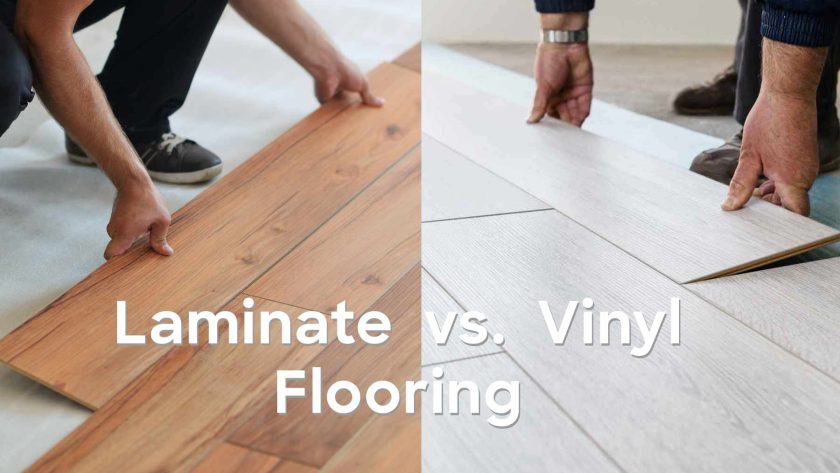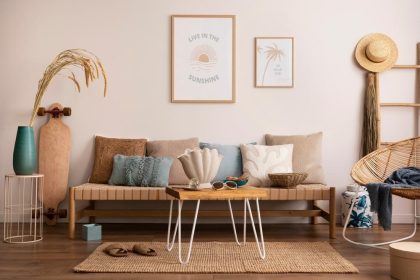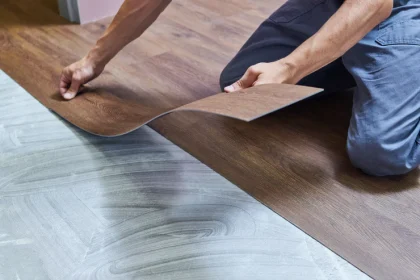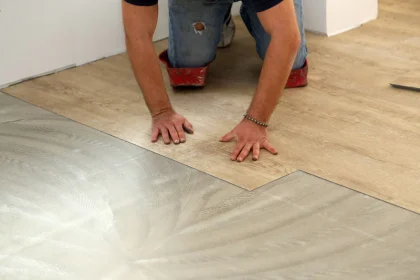When renovating your home, choosing the right flooring can make all the difference. Vinyl plank flooring and laminate flooring are two popular options among homeowners due to their attractive look, durability, and budget-friendly prices. But how do you choose between them? In this guide, we’ll clearly outline the differences, advantages, disadvantages, and costs of vinyl plank flooring vs laminate, helping you decide which option is ideal for your needs.
Vinyl Plank Flooring vs Laminate: What’s the Difference?
At first glance, laminate flooring and vinyl plank flooring appear almost identical, both offering a realistic wood look at an affordable price. However, their core materials differ significantly.
- Vinyl plank flooring is made primarily from PVC, a synthetic and waterproof material, making it excellent for moisture-prone spaces like kitchens and bathrooms.
- Laminate flooring consists of compressed wood fibres topped with a photographic layer that resembles natural wood, offering moisture resistance but not total waterproofing.
Vinyl Plank Flooring: Pros and Cons
Pros of Vinyl Plank Flooring
1. Fully Waterproof Flooring Option
One of vinyl plank flooring’s biggest advantages is its complete waterproofing. This makes it perfect for kitchens, bathrooms, laundry rooms, or anywhere spills are common. If you’re specifically seeking waterproof flooring options, luxury vinyl plank flooring stands out clearly over laminate thanks to its advanced durability and visual appeal.
2. Durability and Low Maintenance
Vinyl flooring is built to last. With a protective wear layer, it effectively resists scratches, dents, and everyday damage. Regular sweeping and occasional mopping are all you need, making it a practical, low maintenance flooring choice for busy homes.
3. Comfortable Underfoot
Compared to laminate, vinyl plank flooring feels softer and warmer underfoot, providing extra comfort. This is particularly beneficial in living rooms or kitchens, where you spend significant time standing or walking.
4. Easy DIY Installation
Vinyl plank flooring typically has an easy-to-use click-lock system, allowing you to undertake a DIY flooring project effortlessly. This convenience can significantly cut down installation costs, making vinyl a smart, affordable flooring for homes.
Planning to install it yourself? Don’t miss our roundup of common mistakes when installing vinyl plank flooring to avoid costly errors.
Cons of Vinyl Plank Flooring
- UV Sensitivity: Prolonged sunlight exposure can cause slight discolouration or fading over time.
- Environmental Considerations: PVC manufacturing involves chemicals, which environmentally-conscious homeowners may find concerning.
Laminate Flooring: Pros and Cons
Pros of Laminate Flooring
1. Cost-Effective with Realistic Wood Look
Laminate flooring remains popular due to its realistic wood appearance at an affordable price. With advanced photographic technology, laminate can replicate the textures and colours of natural timber convincingly.
2. Durable Surface for Heavy Traffic
Laminate flooring provides exceptional resistance against scratches, making it a durable choice for homes with children, pets, or heavy foot traffic.
3. Easy DIY-Friendly Installation
Like vinyl plank flooring, laminate flooring also features a click-lock floating floor design, simplifying the DIY installation process and potentially reducing overall costs.
4. Environmentally Friendly
Laminate flooring is predominantly wood-based, making it recyclable and more eco-friendly compared to vinyl flooring, appealing to environmentally-aware homeowners.
Cons of Laminate Flooring
- Limited Waterproofing: Laminate is moisture-resistant but not completely waterproof. Extended exposure to moisture can lead to warping or swelling.
- Noise and Comfort: Laminate flooring is typically harder underfoot and tends to create more noise when walked upon compared to vinyl plank flooring.
Vinyl vs Laminate Flooring: Cost Comparison
Cost plays a significant role when choosing flooring for your home renovation.
- Vinyl Plank Flooring Costs: Typically ranges from £15 to £35 per square metre for materials, with professional installation costing approximately £15 to £20 per square metre. Premium options can exceed £50 per square metre.
- Laminate Flooring Costs: Slightly more affordable, generally costing £10 to £30 per square metre, with installation costs of around £12 to £20 per square metre. High-quality laminate may reach approximately £40 per square metre.
Both types provide excellent value, but your choice may depend on moisture requirements and expected foot traffic.
For a more detailed breakdown, including professional vs DIY estimates and hidden costs, see our guide on the cost of vinyl flooring and installation.
Vinyl Plank Flooring vs Laminate: Which is Best?
To help you quickly decide, consider these scenarios:
- High Moisture Areas (Bathrooms/Kitchens): Vinyl plank flooring is the clear winner due to its waterproof qualities — especially varieties like waterproof vinyl flooring designed for wet environments.
- Heavy Traffic Areas (Living rooms/Hallways): Both offer robust durability, but vinyl offers added comfort underfoot.
- Aesthetic Preference: If your priority is a realistic wood look, laminate flooring tends to replicate textures and appearance slightly better.
- DIY and Budget: Both flooring types offer DIY-friendly installation. Laminate may initially be more affordable, though vinyl’s durability and waterproof properties justify its slightly higher price.
Expert Opinion: Choosing Your Flooring
Interior designer Hannah Collins from The Flooring Experts recommends:
“For homes with young families or pets, I often suggest vinyl plank flooring due to its durability and waterproofing. Laminate flooring suits homeowners prioritising aesthetic authenticity and those who are aware of moisture limitations.”
In short, evaluating your room’s specific needs alongside your aesthetic and budget priorities will guide you towards the most suitable flooring.
Real-Life Experience: Vinyl or Laminate?
Consider a recent home renovation in Manchester, where homeowners faced precisely this decision. Initially drawn to laminate’s natural wood aesthetics, they ultimately chose vinyl plank flooring for their open-plan kitchen and living room. The primary deciding factors were waterproof protection against everyday spills from their two young children and comfort underfoot. Months later, they expressed satisfaction with their decision, highlighting the floor’s practicality and ease of maintenance.
If you’re dealing with existing tile and wondering about compatibility, here’s everything you need to know about putting vinyl flooring over tile.
FAQ: Quick Answers about Vinyl vs Laminate
1. Is vinyl plank flooring better than laminate?
Vinyl plank flooring is superior in moisture-heavy areas, while laminate offers a slightly more authentic wood appearance at a typically lower cost.
2. Can laminate flooring be used in kitchens and bathrooms?
Laminate flooring can be used but with caution, as prolonged moisture exposure can damage it. Vinyl plank flooring is recommended as a more reliable waterproof option.
3. Which is easier to install, vinyl plank or laminate?
Both are similarly straightforward to install due to their click-lock designs, making them excellent DIY flooring options.
4. Which flooring lasts longer, vinyl or laminate?
Both have excellent durability, but vinyl typically withstands moisture better, offering slightly longer-lasting performance in wet conditions.
Final Verdict on Vinyl Plank Flooring vs Laminate
Ultimately, choosing between vinyl plank flooring and laminate comes down to your home’s specific needs. If waterproofing and comfort matter most, vinyl is ideal. For homeowners seeking authenticity, affordability, and durability, laminate flooring stands out as an excellent option.
Carefully weigh your preferences regarding moisture exposure, budget constraints, and appearance. With either choice, both vinyl and laminate flooring offer stylish, durable, and affordable solutions, significantly enhancing your home’s comfort and value.





